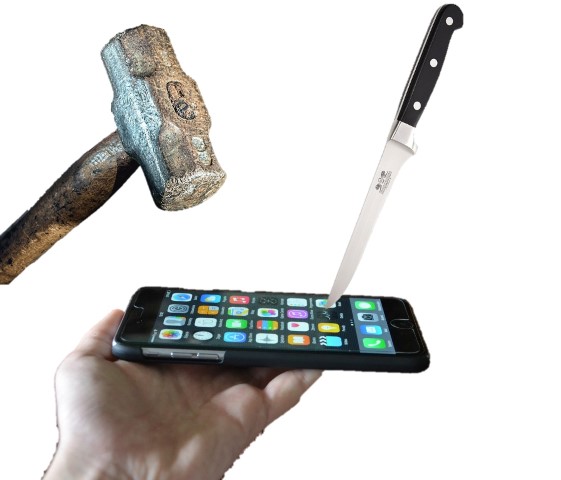Hard as a diamond and deformable as a metal, the supercrystal is coming

Is it possible to have a crystal this strong? Source: Image designed by @emiliomoron with images for public use: phone, hammer and knife.
Now, such a material is considered the holy grail of materials, because not only would it give us a stronger screen for the cell phone, we speak that a material with these properties has the potential to make technology in optical devices and solar energy storage devices more robust and profitable.
Well, a team composed of several materials researchers from the Hamburg University of Technology and their colleagues from Berkeley University have developed a hybrid material that they call supercrystal, which is quite close to this holy grail.
Hard and yet deformable
This material is exceptional for being hard and at the same time deformable, remember that hardness and malleability are hardly properties that we can find together, for example, a glass-ceramic material is resistant to scratches and thermal expansion but it cannot be deformed, and a sheet of metal is deformable but can be easily grated using a harder material.
To make a material that combines both properties, these scientists used organically functionalized supercrystalline nanoparticles. The scientists discovered that they could arrange the particles as if they were atoms, building a three-dimensional, periodic network analogous to crystalline networks. To achieve this, they used spherical iron oxide (Fe3O4) nanoparticles, a fairly hard oxide, and an adhesion layer made of liquid oleic acid. This makes the supercrystal both hard and easy to deform. The results of the research were shown in the journal Science Advance.
The scientists demonstrated that these supercrystalline materials accommodate plastic deformation in the form of stacking, dislocation and sliding bands, which leads to even multiple strengthening of the material, giving it an elastoplastic behavior, accompanied by compaction.

The arrangement of the particles allows the plastic deformation of the material. Source: @emiliomoron.
These nanostructured supercrystalline materials are a rapidly growing field of materials science and engineering, thanks to the development of processing techniques optimized for the nanoscale. And they are finding a variety of applications in different fields, some already well established like solar panel manufacturing and optoelectronics up to their that in biomedical sensors.
The plastic deformation of metals is something that has long interested materials researchers, and the fact that this feature can be replicated in crystalline materials is a new and exciting field, one can only imagine the impact these materials will have on electronics technology, which is certainly more appealing to imagine our electronic devices with stronger and more deformable glass screens.
Thanks for coming by to read friends, I hope you liked the information. See you next time.

I think this type of glass will also have many applications asides just using it as screens. Maybe it will be used to make glass storage devices that will stand the test of time. Technology keeps getting more advanced.
Nice piece buddy
hat's right my friend, technology development does not stop. And no doubt this advance will have many more applications than just as a cell phone screen, there are many fields where hard and resistant crystals are required.
Congratulations @emiliomoron! You have completed the following achievement on the Hive blockchain and have been rewarded with new badge(s) :
You can view your badges on your board and compare yourself to others in the Ranking
If you no longer want to receive notifications, reply to this comment with the word
STOPA quite interesting development, no doubt we would appreciate having more resistance in the display of cell phones, but its application in solar panels is also attractive, perhaps flexible panels will improve the transport and installation of them, making this technology more versatile and robust.
That's right @yusvelasquez, a cell phone with a more resistant screen is something we would all be very grateful for, but really the potential is broader, such as energy storage and photonics.